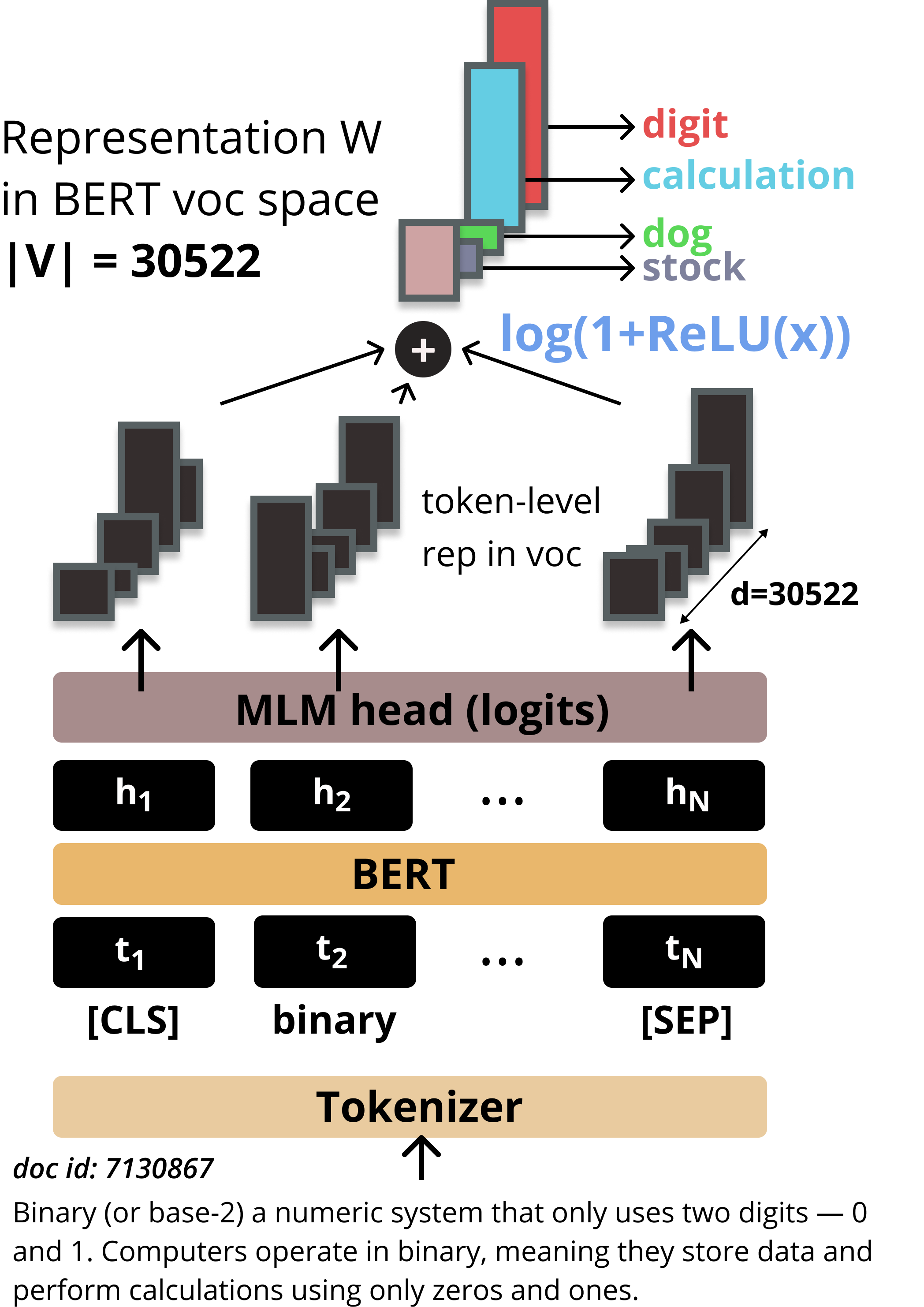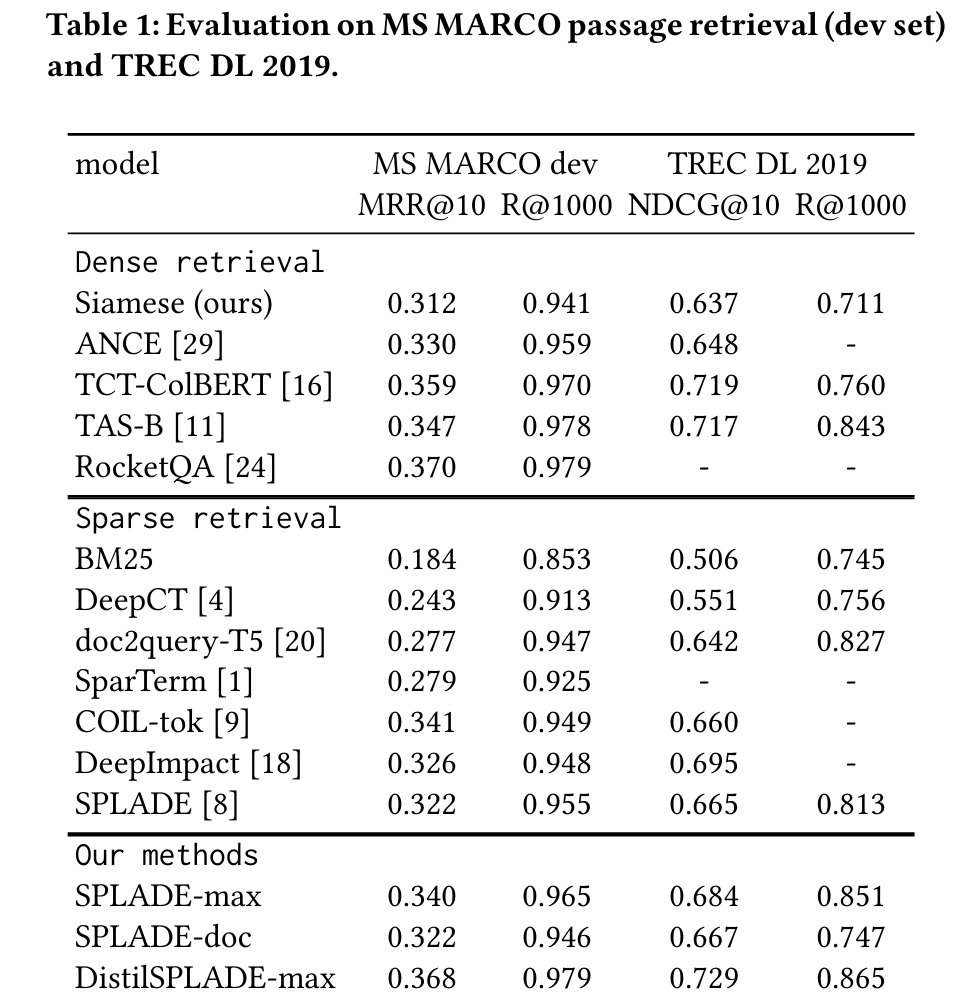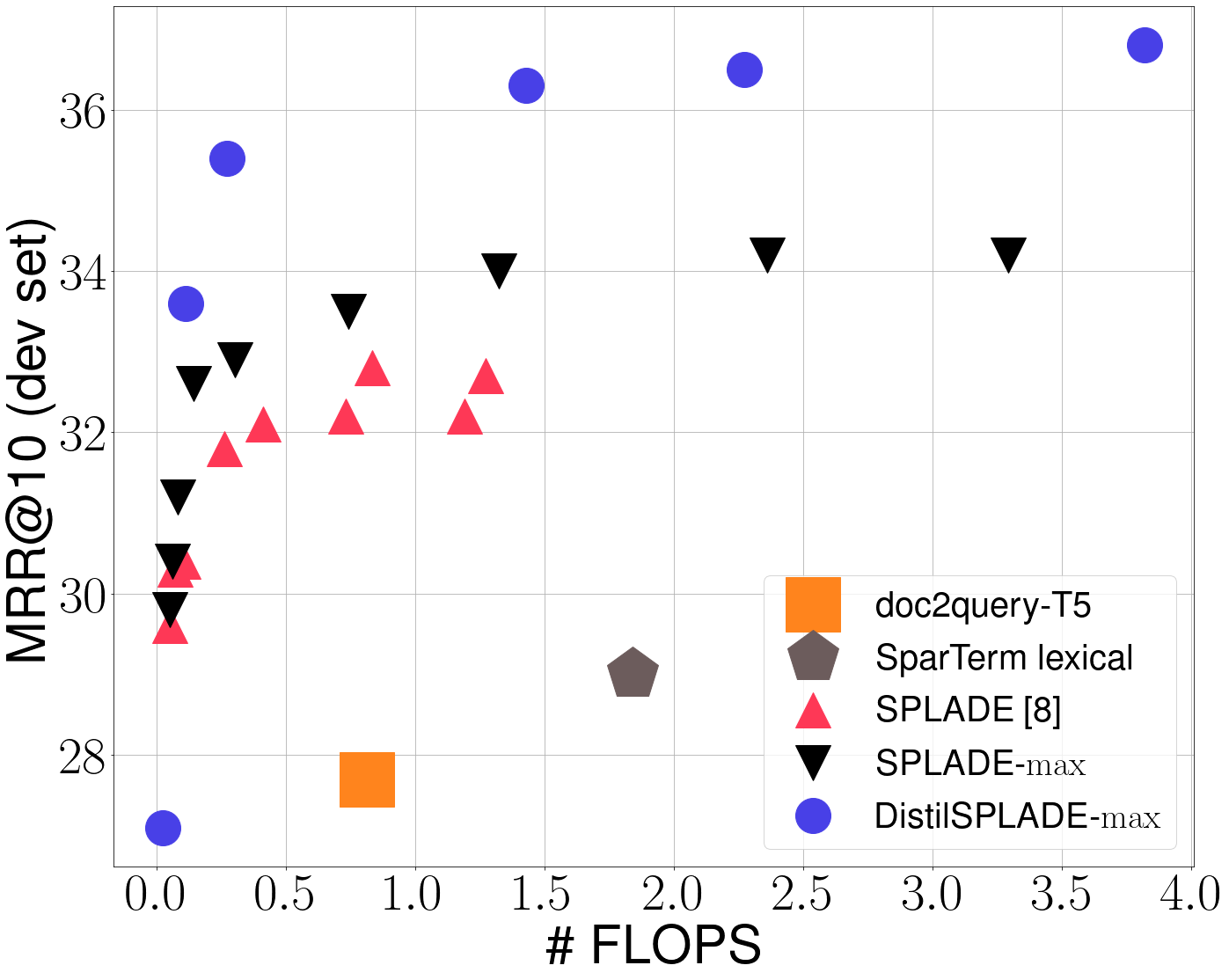This repository contains the weights for four models as well as the code for running inference for our two papers:
- [v1]: SPLADE: Sparse Lexical and Expansion Model for First Stage Ranking, Thibault Formal, Benjamin Piwowarski and Stéphane Clinchant. SIGIR21 short paper. link
- [v2]: SPLADE v2: Sparse Lexical and Expansion Model for Information Retrieval, Thibault Formal, Benjamin Piwowarski, Carlos Lassance, and Stéphane Clinchant. arxiv. link
We also provide some scripts to run evaluation on the BEIR benchmark in the beir_evaluation folder, as well as training code in the training_with_sentence_transformers folder.
TL; DR
Recently, dense retrieval with approximate nearest neighbors search based on BERT has demonstrated its strength for
first-stage retrieval, questioning the competitiveness of traditional sparse models like BM25. In this work, we have
proposed SPLADE, a sparse model revisiting query/document expansion. Our approach relies on in-batch negatives,
logarithmic activation and FLOPS regularization to learn effective and efficient sparse representations. SPLADE is an
appealing candidate for first-stage retrieval: it rivals the latest state-of-the-art dense retrieval models, its
training procedure is straightforward, and its efficiency (sparsity/FLOPS) can be controlled explicitly through the
regularization such that it can be operated on inverted indexes. In reason of its simplicity, SPLADE is a solid basis
for further improvements in this line of research.
splade: a spork that is sharp along one edge or both edges, enabling it to be used as a knife, a fork and a spoon.
- 24/09/2021: add the weights for v2 version of SPLADE (max pooling and margin-MSE distillation training) + add scripts to evaluate the model on the BEIR benchmark.
- 16/11/2021: add code for training SPLADE using the Sentence Transformers framework + update LICENSE to properly include BEIR and Sentence Transformers.
We give a brief overview of the model architecture and the training strategy. Please refer to the paper for further details ! You can also have a look at our blogpost for additional insights and examples ! Feel also free to contact us via Twitter or mail @ thibault.formal@naverlabs.com !
SPLADE architecture (see below) is rather simple: queries/documents are fed to BERT, and we rely on the MLM head used for pre-training to actually predict term importance in BERT vocabulary space. Thus, the model implicitly learns expansion. We also added a log activation that greatly helped making the representations sparse. Relevance is computed via dot product.
The model thus represents queries and documents in the vocabulary space. In order to make these representations sparse -- so that we can use an inverted index, we explicitly train the model with regularization on q/d representations (L1 or FLOPS) as shown below:
SPLADE learns how to balance between effectiveness (via the ranking loss) and efficiency (via the regularization loss). By controlling lambda, we can adjust the trade-off.
- See
inference_SPLADE.ipynbandbeir_evaluation/splade_beir.ipynb
- See
training_with_sentence_transformersfolder
Requirements can be found in requirements.txt. In order to get the weights, be sure to have git lfs installed.
- Below is a table of results comparing SPLADE to several competing baselines:
- One can adjust the regularization strength for SPLADE to reach the optimal tradeoff between performance and efficiency:
Please cite our work as:
@inproceedings{Formal2021_splade,
author = {Thibault Formal, Benjamin Piwowarski and Stéphane Clinchant},
title = {{SPLADE: Sparse Lexical and Expansion Model for First Stage Ranking}},
booktitle = {Proc. of SIGIR},
year = {2021},
}
SPLADE Copyright (c) 2021-present NAVER Corp.
SPLADE is licensed under a Creative Commons Attribution-NonCommercial-ShareAlike 4.0 International License. (see license)
You should have received a copy of the license along with this work. If not, see http://creativecommons.org/licenses/by-nc-sa/4.0/ .



